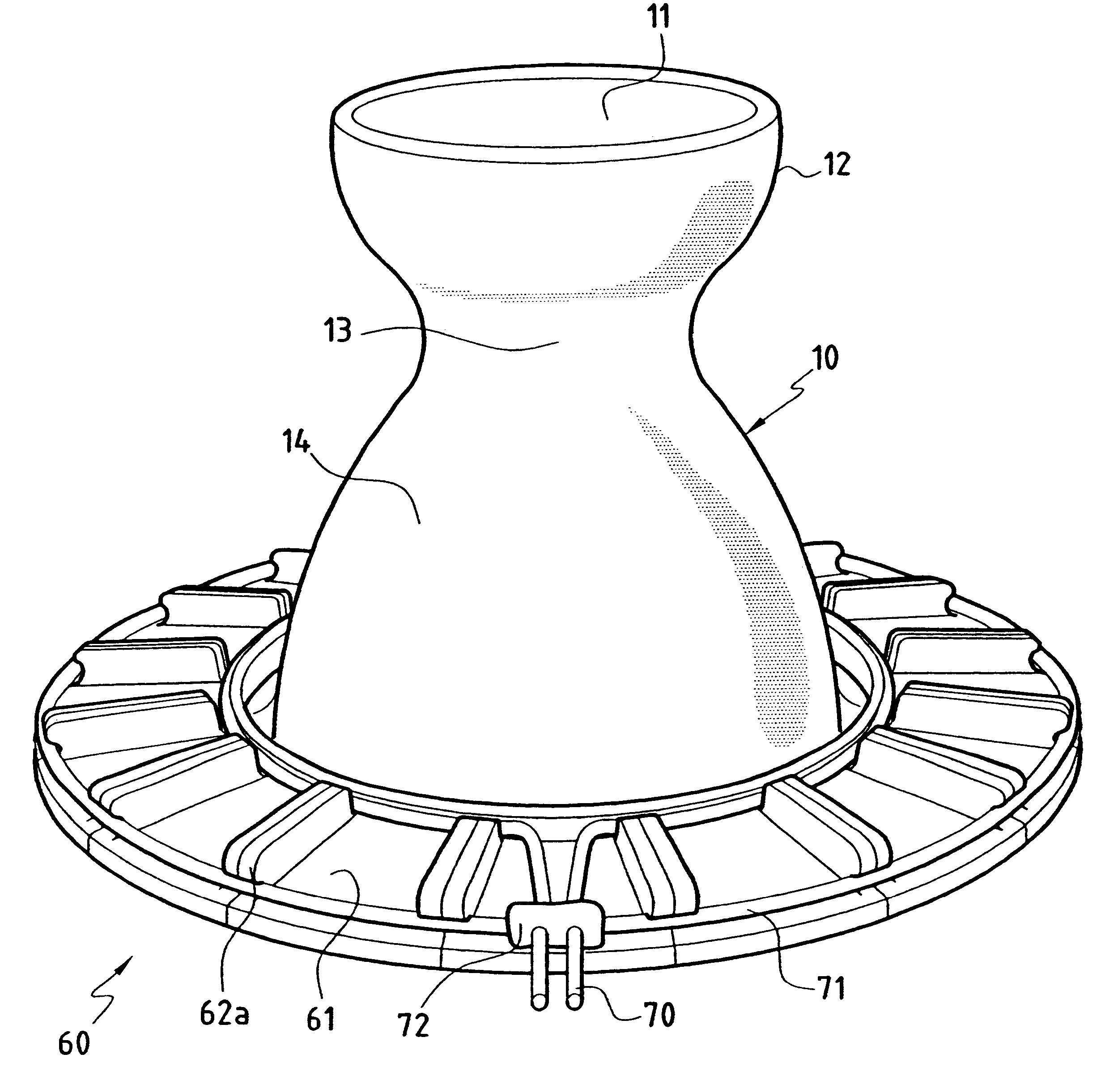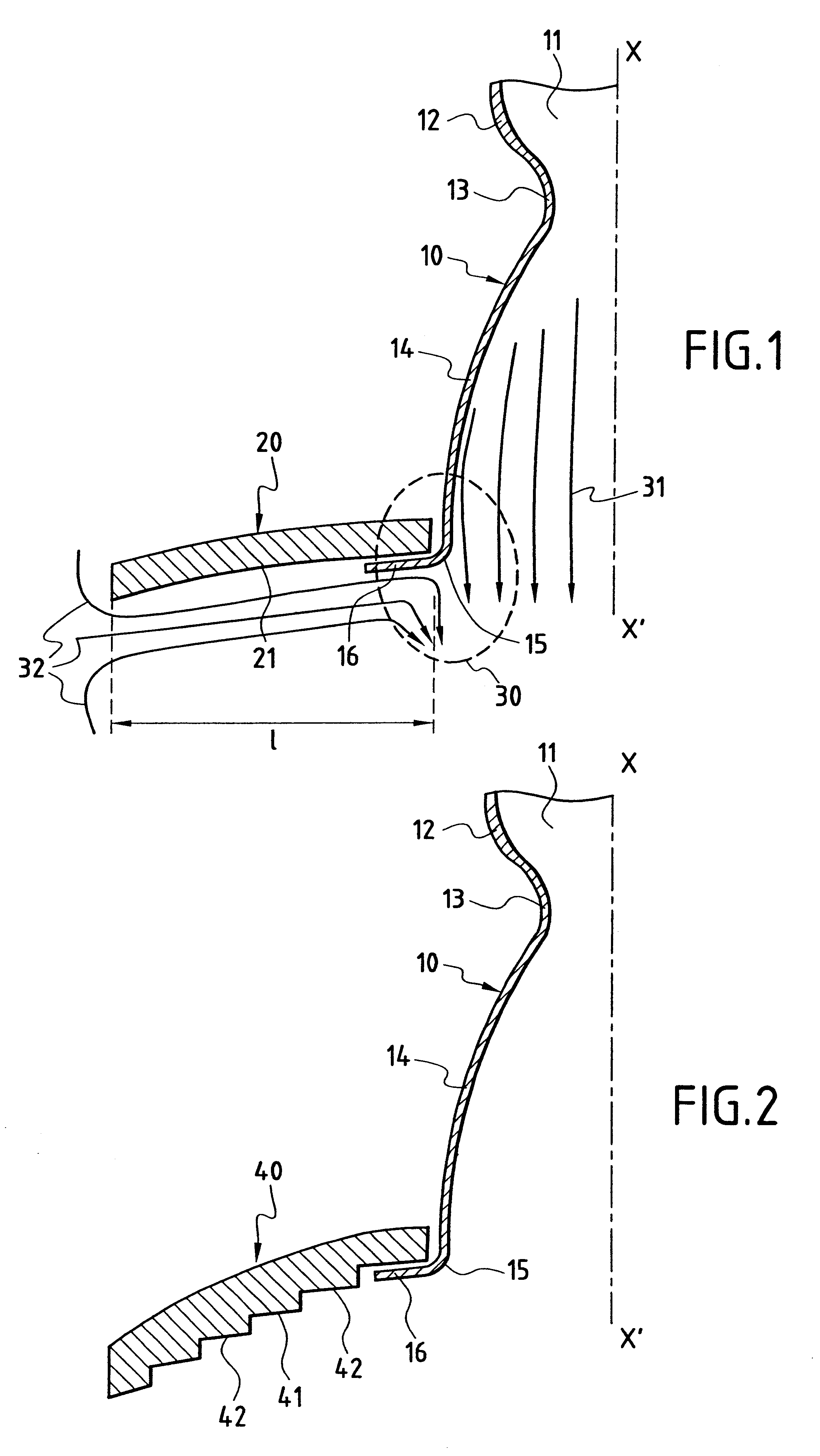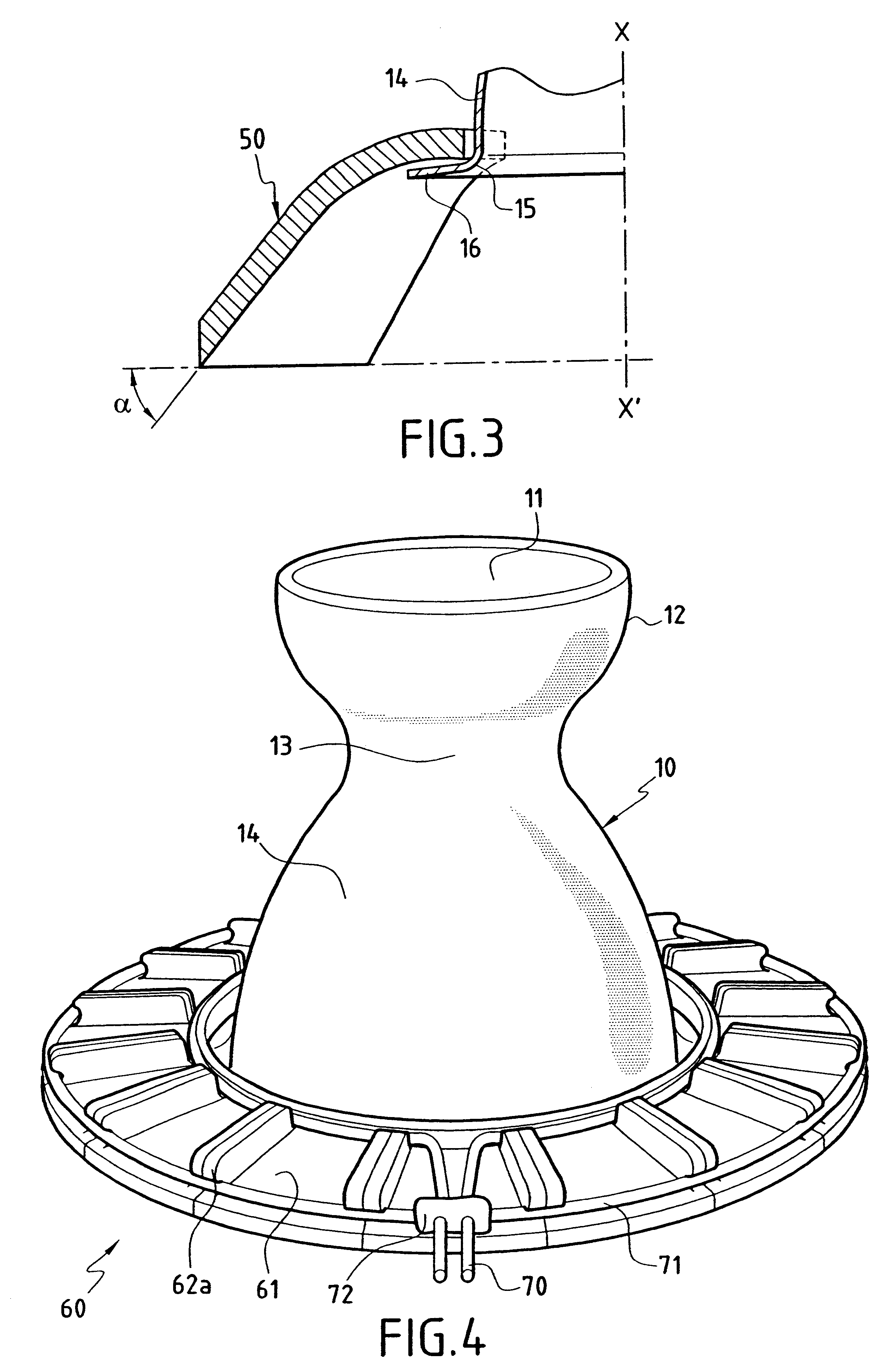Device for displacing to nozzle outlet or eliminating jet separation in rocket engine nozzles, and a nozzle including the device
a technology for rocket engines and nozzles, which is applied in the direction of machines/engines, vessel construction, marine propulsion, etc., can solve the problems of affecting the structure of the diverging portion, affecting reducing the flow rate of the rocket engine, so as to reduce eliminate or reduce the effect of jet separation in the nozzle and control the phenomenon of jet separation
- Summary
- Abstract
- Description
- Claims
- Application Information
AI Technical Summary
Benefits of technology
Problems solved by technology
Method used
Image
Examples
Embodiment Construction
FIG. 1 is a general section view of a rocket engine nozzle 10 for operation with a device of the present invention. The nozzle 10 comprises an upstream converging portion 12 receiving the hot gases produced in a combustion chamber 11, a nozzle throat 13 of section area Sc, and a diverging portion 14 which expands the hot gases downstream from the throat 13 and ejects them from the downstream end 15 of the diverging portion which defines a nozzle outlet section of area Se.
When seeking to optimize rocket engine nozzles to create a high ejection speed for the hot gases produced in the chamber, it is necessary in particular to expand the gases as much as possible in the nozzle by adopting for this purpose a large ratio for the section defined by the outlet section area Se over the section area of the throat Sc. As already mentioned, for a given thruster operating at a given rate, a nozzle can be matched only for a single altitude which is generally situated at a height of several kilome...
PUM
 Login to View More
Login to View More Abstract
Description
Claims
Application Information
 Login to View More
Login to View More - R&D
- Intellectual Property
- Life Sciences
- Materials
- Tech Scout
- Unparalleled Data Quality
- Higher Quality Content
- 60% Fewer Hallucinations
Browse by: Latest US Patents, China's latest patents, Technical Efficacy Thesaurus, Application Domain, Technology Topic, Popular Technical Reports.
© 2025 PatSnap. All rights reserved.Legal|Privacy policy|Modern Slavery Act Transparency Statement|Sitemap|About US| Contact US: help@patsnap.com



